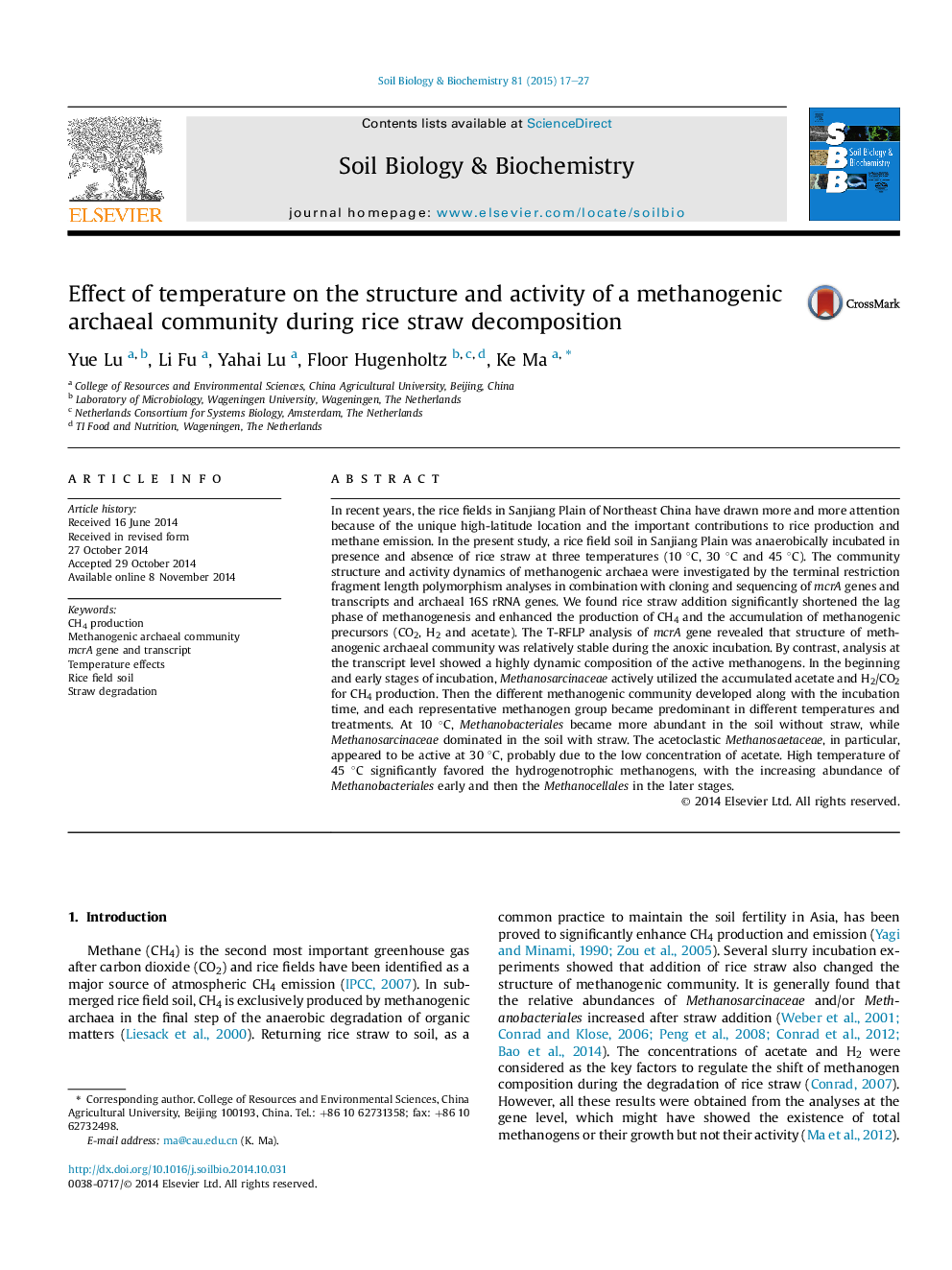| کد مقاله | کد نشریه | سال انتشار | مقاله انگلیسی | نسخه تمام متن |
|---|---|---|---|---|
| 2024409 | 1542603 | 2015 | 11 صفحه PDF | دانلود رایگان |
عنوان انگلیسی مقاله ISI
Effect of temperature on the structure and activity of a methanogenic archaeal community during rice straw decomposition
ترجمه فارسی عنوان
تاثیر دما بر ساختار و فعالیت جامعه آرامی متانولنیک در هنگام تجزیه کاه برنج
دانلود مقاله + سفارش ترجمه
دانلود مقاله ISI انگلیسی
رایگان برای ایرانیان
موضوعات مرتبط
علوم زیستی و بیوفناوری
علوم کشاورزی و بیولوژیک
دانش خاک شناسی
چکیده انگلیسی
In recent years, the rice fields in Sanjiang Plain of Northeast China have drawn more and more attention because of the unique high-latitude location and the important contributions to rice production and methane emission. In the present study, a rice field soil in Sanjiang Plain was anaerobically incubated in presence and absence of rice straw at three temperatures (10 °C, 30 °C and 45 °C). The community structure and activity dynamics of methanogenic archaea were investigated by the terminal restriction fragment length polymorphism analyses in combination with cloning and sequencing of mcrA genes and transcripts and archaeal 16S rRNA genes. We found rice straw addition significantly shortened the lag phase of methanogenesis and enhanced the production of CH4 and the accumulation of methanogenic precursors (CO2, H2 and acetate). The T-RFLP analysis of mcrA gene revealed that structure of methanogenic archaeal community was relatively stable during the anoxic incubation. By contrast, analysis at the transcript level showed a highly dynamic composition of the active methanogens. In the beginning and early stages of incubation, Methanosarcinaceae actively utilized the accumulated acetate and H2/CO2 for CH4 production. Then the different methanogenic community developed along with the incubation time, and each representative methanogen group became predominant in different temperatures and treatments. At 10 °C, Methanobacteriales became more abundant in the soil without straw, while Methanosarcinaceae dominated in the soil with straw. The acetoclastic Methanosaetaceae, in particular, appeared to be active at 30 °C, probably due to the low concentration of acetate. High temperature of 45 °C significantly favored the hydrogenotrophic methanogens, with the increasing abundance of Methanobacteriales early and then the Methanocellales in the later stages.
ناشر
Database: Elsevier - ScienceDirect (ساینس دایرکت)
Journal: Soil Biology and Biochemistry - Volume 81, February 2015, Pages 17-27
Journal: Soil Biology and Biochemistry - Volume 81, February 2015, Pages 17-27
نویسندگان
Yue Lu, Li Fu, Yahai Lu, Floor Hugenholtz, Ke Ma,
